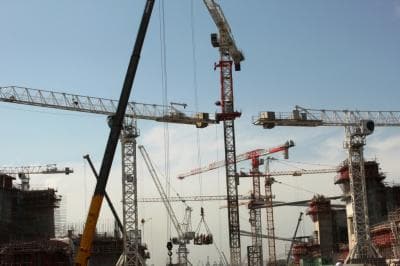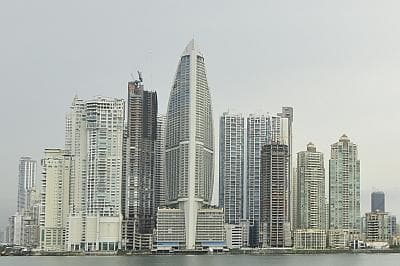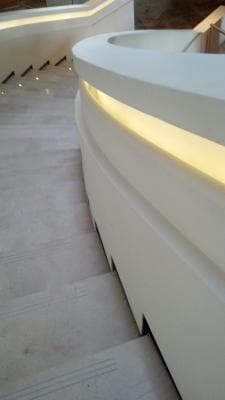Recently, my husband Richard Kim and I traveled to South and Central America. After spending time in the Chilean Andes, we headed north to Panama, as I've always been interested in the canal. A recent New York Times article ranked Panama as the number one destination for 2012; this helped us make the decision. As with many of my travels, I did a lot research beforehand to get a sense of the architectural scene in the area. While our trip wasn't specifically about design and construction, I couldn't help but observe aspects of the built environment around me, and about the canal itself. First priority was to see the Panama Canal. There are three locks that make up the canal. The Miraflores, and Pedro Miguel, lift ships from the Pacific up to Lake Gatun. Gatun lowers them to the Atlantic side. We visited the Miraflores lock. Witnessing the locks function is something one should definitely experience, if possible. Especially impressive is the scale of the ships compared to the surroundings, i.e., on the top floor of the four-story visitors center, we were looking straight across to the deck of a ship.
Turns out I knew a good deal about the canal's construction, including the fact that the French originally started the project and basically gave up due to malaria and engineering challenges. In 1904, the United States took control of the project, and it opened in 1914; eventually, the U.S. relinquished control of the canal in to Panama in 1999. Learning the local history gives me a more objective perspective. Now, due to the increased import/export market there is more demand than ever on the canal. New locks, to be completed in 2015, are wider, deeper and longer to handle the increased size of cargo ships. This major undertaking is creating huge economic growth for the country, and is most noticeable in Panama City.
I'd never seen so many cranes; they completely populate the skyline.

But it is the very number of new towers populating the city scene that overwhelms: seemingly scores of them, all tall and all at once. The high-rises seem surreal; they're less about space for people, and more about the icon they project. The sail inspired 70-story Trump Tower is a perfect example.

It's the tallest building in Latin America, and includes a hotel (where we stayed), along with condos, shops, etc. While the floor plan allows the majority of rooms to face the water with amazing views, the layouts were not as successful. However, the spaces set up a metropolitan atmosphere with high-end finishes and simple, refined furniture. I noticed some pleasing architectural details here and there, including this lobby stair detail.

My biggest criticism of the hotel was the quality of (or lack thereof) construction. The concrete work was not well executed, most likely the product of poor formwork. Inside, some of the interior finishes were sad: sloppy paint, peeling wallpaper, inadequately detailed glass and marble junctures in the bathrooms, etc. While touring the crowded city scene, I noticed construction sites are less organized than in the United States. There is an atmosphere of great haste, instead of well-managed organization. It seemed the developers and contractors were racing to beat the clock, but whatever deadline may have existed escaped my awareness. And this was happening everywhere. The view outside our hotel room. Another hotel going up.
We also visited the San Blas Islands, just off the coast. After a three-hour drive through the 148,000 acre Kuna Yala Rainforest Reserve, we boarded a boat for the 30-minute ride to the islands, home to the indigenous Kuna Indians.
Their society is private and only recently started allowing tourists. The boat owner told us he needed to make a stop at his home. He was kind enough to take us on a tour of the island. I was struck by the extreme contrasts presented by the intense, frenzied construction scene of the big city with that of these quiet, lush islands.
The docks were make-shift, and ram-shackle buildings were everywhere; many dwellings were built of bamboo walls with thatched roofs. Infrastructure was of only the very most basic sort. Sadly, the long-lasting evidence of modern-day living (containers, plastic bags, trash, diapers, etc.) was also mixed with the beauty of the islands.
My parting impression was one of confusion. Panama is obviously booming, but the consequences of that burgeoning growth may have as much of a durable (and negative) impact upon the inhabitants and the tropical ecosystem as the glamour of the shining new towers.
